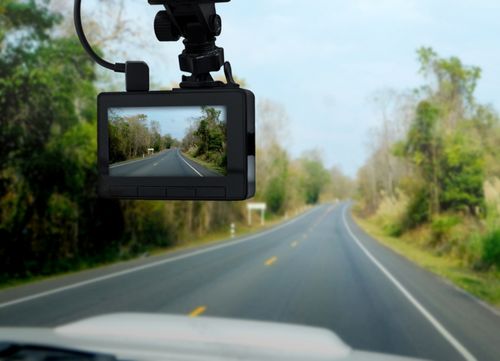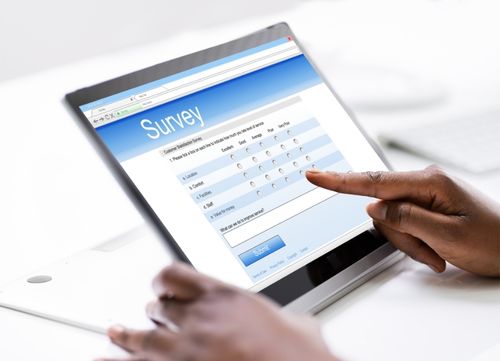
Driver behaviour monitoring can be a real game-changer for fleet businesses. It can help fleet managers understand driver habits, lower accident rates, and help keep a company’s drivers and vehicles safe from harm. Not to mention helping to keep other road users safe, and lower a fleet’s risk of an expensive lawsuit!
However, some drivers can bristle at the idea of a business watching their every move. In the worst cases that can lead to lower driver morale, higher staff turnover, and even issues with compliance.
Yet when it’s pitched right, helping your team adjust to a driver behaviour monitoring system can be surprisingly painless. Here, we’ll detail some steps to take to help you do just that.
But first, it’s helpful to take time to understand exactly what driver behaviour monitoring is and how it works…
The first step to changing the behaviour of your drivers? Encourage behaviour change with telematics.
Telematics tools use sophisticated tracking technology to measure things like location, speed, braking and cornering patterns, and the general health of the vehicle.
Typically, fleets pair these with using driver behaviour monitoring cameras to improve driver safety. This can mean both inward and outward-facing dash cams that can sync up to show fleet managers how a driver’s behaviour affects road behaviour – particularly helpful when looking back over an incident to establish who was at fault.

These are our tips to helping your drivers adjust to driver behaviour monitoring.
As a key part of modern fleet management, driver behaviour monitoring is designed to help the business gauge how vehicles can be better used by the business and, how safety policies can be better followed by its drivers. It really is all in service of making a fleet more efficient and safer – which ultimately makes your company a better place to work for all involved.
However, drivers are bound to be suspicious when you tell them you’re incepting a driver behaviour monitoring system. Especially older ones who’ve driven for a living for a long time without such monitoring! Explaining that you’re using driver behaviour monitoring cameras to improve driver safety will go a long way to relieving any resistance you might encounter.
If drivers are found to be driving in a fuel-inefficient manner, or are proven to be at fault for an accident – what happens then? These will be the obvious questions that implementing a driver behaviour monitoring system throws up.
It’s important to convey that driver behaviour monitoring is meant to help improve things rather than being a punitive measure. So should a driver’s habits behind the wheel be found to be out of line with company policy and best practice, it’s likely the impacts could be a refresher training course on driver safety. If the incident is more serious, such as an accident in which property or a person came to harm, then the footage could actually be used to protect the driver from prosecution. It might also be helpful in informing driver training of the future.
Either way, try taking a glass half full approach and conveying the positive impacts to drivers; encouraging behaviour change with telematics and in-cab CCTV rather than focusing on the potential penalties it could lead to.
When it comes to driver behaviour monitoring and your business goals, it can help compliance hugely to be transparent about exactly what behaviour you’ll be tracking. The term “driver behaviour monitoring” itself might seem a little nebulous and scary for your drivers until you let them know that you’ll be tracking vehicle handling, average speed, cornering habits and so on. Then if they’re already confident about the way they drive, you’re likely to see any nascent resistance drop away.
Another good idea when implementing a driver behaviour monitoring system is to give a concise idea of when it might be rolled out. That gives drivers time to do refresher training, brush up on company policies, and prepare for any adjustments they might feel they need to make before the system is put in place.
A huge part of fleet management is making sure your drivers feel heard. However, when it comes to incepting a new driver behaviour monitoring system, it’s often the reality that such a decision is thrust upon drivers by management. That can lead to resentment, which in turn can lead to drivers leaving altogether – sometimes even to a competitor that already has driver behaviour monitoring in place as standard!
The key here really is making sure your team have a way to express themselves. That gives them the sense their thoughts and feelings on the subject matter, and can even give them some agency by allowing them the chance to make suggestions on the sorts of things the business could use the new system for.

Of course, asking for feedback in an open forum can be a double-edged sword. It gives the extreme naysayers a chance to spread negative sentiment, while making those who are more on board with the change feel nervous about asking questions. Those between the two extremes might also prefer to keep quiet than risk appearing overly negative, which can actually rob your business of valuable insight and ideas from the people the change might benefit the most.
A great idea to get around this is to incept an anonymous digital survey that allows you to get a feel for employee morale in response to the idea of driver behaviour monitoring. You can also encourage drivers to ask anonymous questions, which you can then read out and answers in team meetings.
Giving employees a voice is always a win regardless of the company culture, and here it’s can make a difference for both driver behaviour monitoring and your business’ ongoing success.
At SG Fleet, we offer a driver behaviour monitoring system called Motrak that incorporates both deep telematics and vehicle CCTV monitoring.
Learn more about Motrak here, or get in touch with us on 01782 337 312. Alternatively, email CSalmon@sgfleet.com to find out how we can help your fleet business.